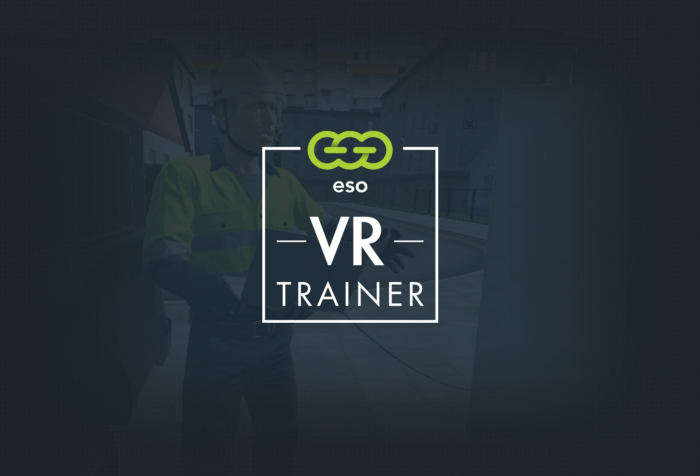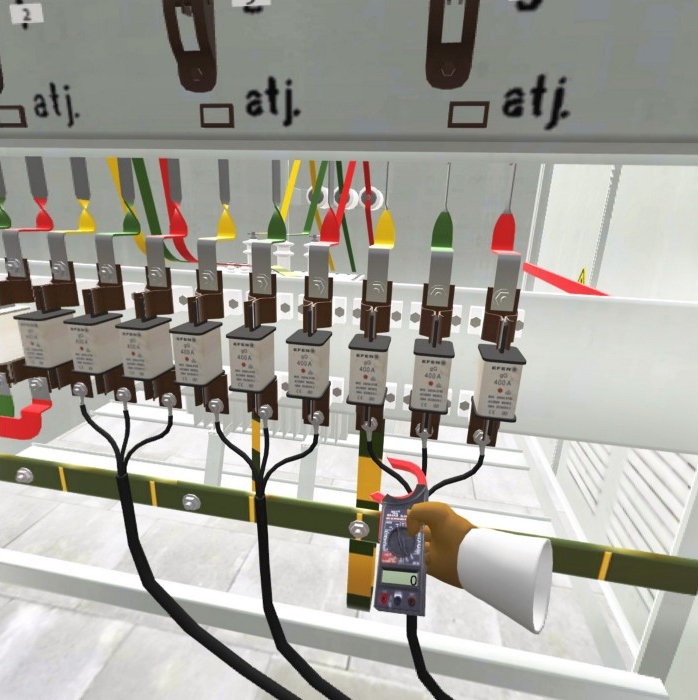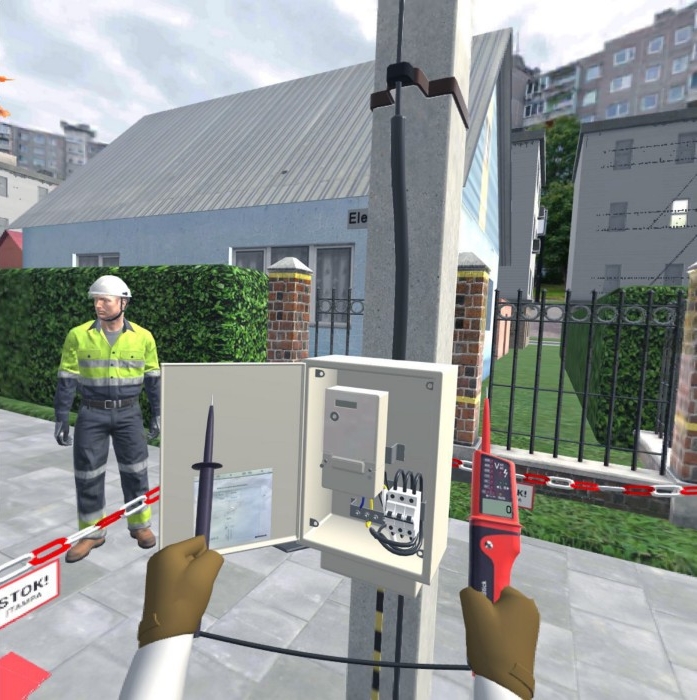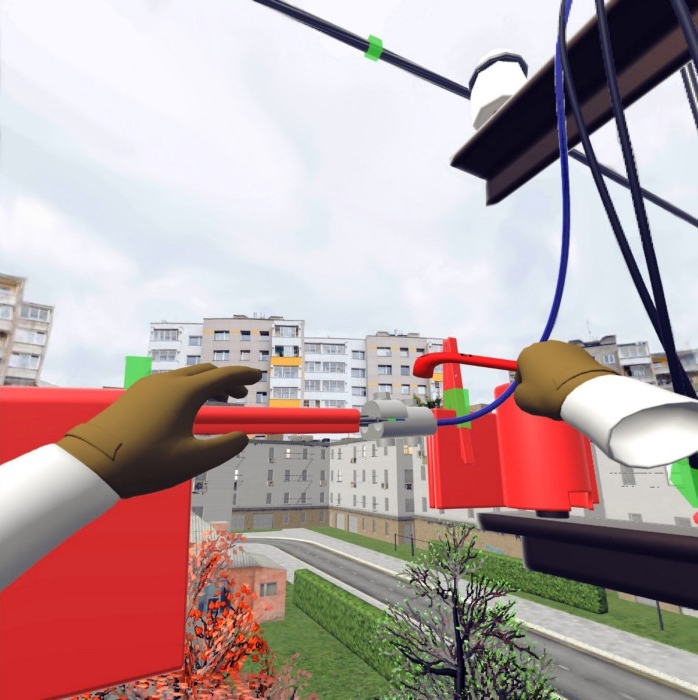
Creating a VR Training Experience for Electrical Engineers
2020 is a pivotal year for virtual reality, with Half-Life: Alyx setting a future path for gaming VR experiences. We at SneakyBox are privileged to work both with gaming and real-life VR products, which allows us to learn from both fields and apply different knowledge and methods from one to another. This year we are planning several virtual reality projects and the first big release is a VR training challenge designed for electrical engineers. We’ll share what decisions were made and tools used to create this experience.
The Partner
ESO (“Energijos Skirstymo Operatorius” AB), controlled by the most innovative state-owned enterprise in Lithuania Ignitis Group, is specializing in electricity and gas supply. The company has over 1,6 million clients around the country and constantly needs to train their employees to provide various services, so they contacted SneakyBox to create a contemporary and unique training experience. Their challenge is to modernize the training system with cutting edge technologies, and we took this opportunity to make it come true.

The Project
When it was time to start the project, ESO was deciding which option was better — creating a 360 video or a VR experience. We managed to convince them that an interactive VR solution would be better. SneakyBox chose this path because:
- Making a 360 video means having less room for failure.
- The trainee can make just minor changes in his choice meanwhile the updates take a long time and it is really expensive to remake the video.
- Having VR training means total freedom for the user.
- The all-around sense of the environment makes workers feel in their nature using various tools and equipment and being exposed to dangers in their job. Besides, VR is easily customizable which allows us to update it quickly and cheaper.
- Has a two-way connection with the user.
- The program interacts with the user and provides an enhanced sense of surroundings when trying out the skills and knowledge. We added a Spectator Mode dedicated to the instructor, where he can see everything that’s going on and help the trainee.

After setting the course with ESO for interactive VR, it was our time to make the main decision. Having a wide variety of VR headsets like HTC Vive, Samsung Gear VR and Oculus Quest we needed to choose the best suitable platform. We eventually chose Oculus Quest because:
- It has two touch controllers working in 3 dimensions and ergonomically mimicking natural hand motions;
- Does not need wires or additional devices such as phones (for example, Samsung Gear VR) or a PC.
- The headgear can be controlled remotely with your mobile device.
The Challenges
The first ideas for VR interactions formed by watching the specialists doing their job and experiencing their field of work. After analysing their work we asked what could be improved in their training experience, how it could be made safer and invited them to design the application together. While planning and developing the training we selected these challenges:
- Testing engineers in a stress-free environment
Given the task to implement the dangerous conditions, we have to make everything clear and easily understandable. - Making dangerous tasks safe and available
As the engineers are challenged to climb utility poles they might experience various hazards, like falling or getting electrocuted. - Meeting ESO’s set strategy they have to finish up till 2030, which key points are:
- Training employees to adapt to sudden changes, qualify them for the innovations;
- Making the company accident-free;
- Motivating digital process by discouraging useless principles.
- Creating an easy to learn app for older employees
Even though younger employees found it rather easy, our hardest challenge was applying it to the more experienced engineers who have never tried VR. - Reducing hours of learning to swift training
- Lacking skilled specialists
Training contractors to combine new and current technologies, making a natural competition between the workers, therefore, speeding up accomplishing set challenges.

The Solutions
Writing down all the challenges we considered what could be done, which steps we have to take and what to implement in the VR experience:
- Learning from the best
Because we had close to none knowledge in this area of their work, we had to go to the field and watch them do it. - Creating a safe and inclusive app
The simulation beginning with an ESO created tests, most common tasks that engineers tackle every day. - Stressless and risk-free environment
Understanding given dangers we managed to create a simulation helping to deal with the risks. We created the AI which calmly explains the task and asks to evaluate the dangers of the assignment. This knowledge and understanding should give employees a leap forward. - Integrating real-life dangers into the training
If the user makes a simple mistake or does not know what should be done — he will be forced to restart the whole level. - Teaching engineers how to save lives if accidents happen
The most important thing in these conditions is health and safety. That is why we have created extra assignments for each trainee to renew first aid skills and knowledge.

The Future Development
ESO VR training experience is a continuous project with increasing complexity levels and options for learning. The current release is already providing us with valuable experience for improvement.
“The energy sector and market are swiftly changing,” said Mindaugas Keizeris, ESO’s Chairman of the Board. “Effective everyday work, constant process modernisation, internal system integrity, reliable data, speed and flexibility are the roots to reach ESO 2030 strategy objectives.”
As some of the company’s 2030 strategies are operational efficiency, network modernisation and making ESO the safest in Lithuania — we believe that our VR experience can be a cornerstone for the change coming to reality.
